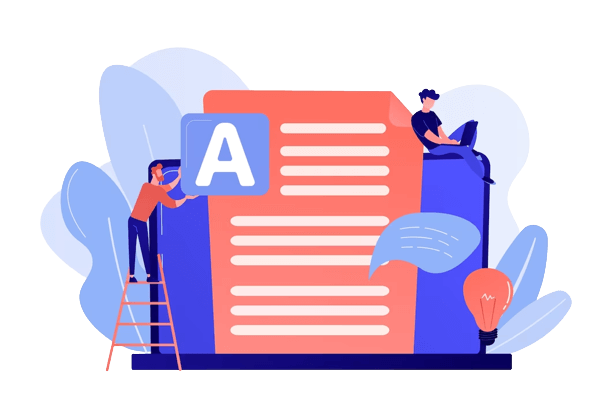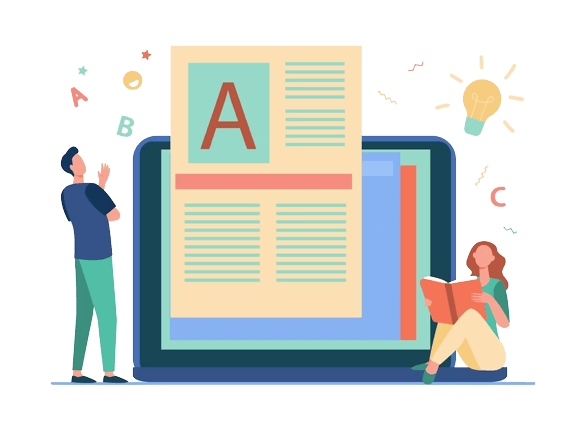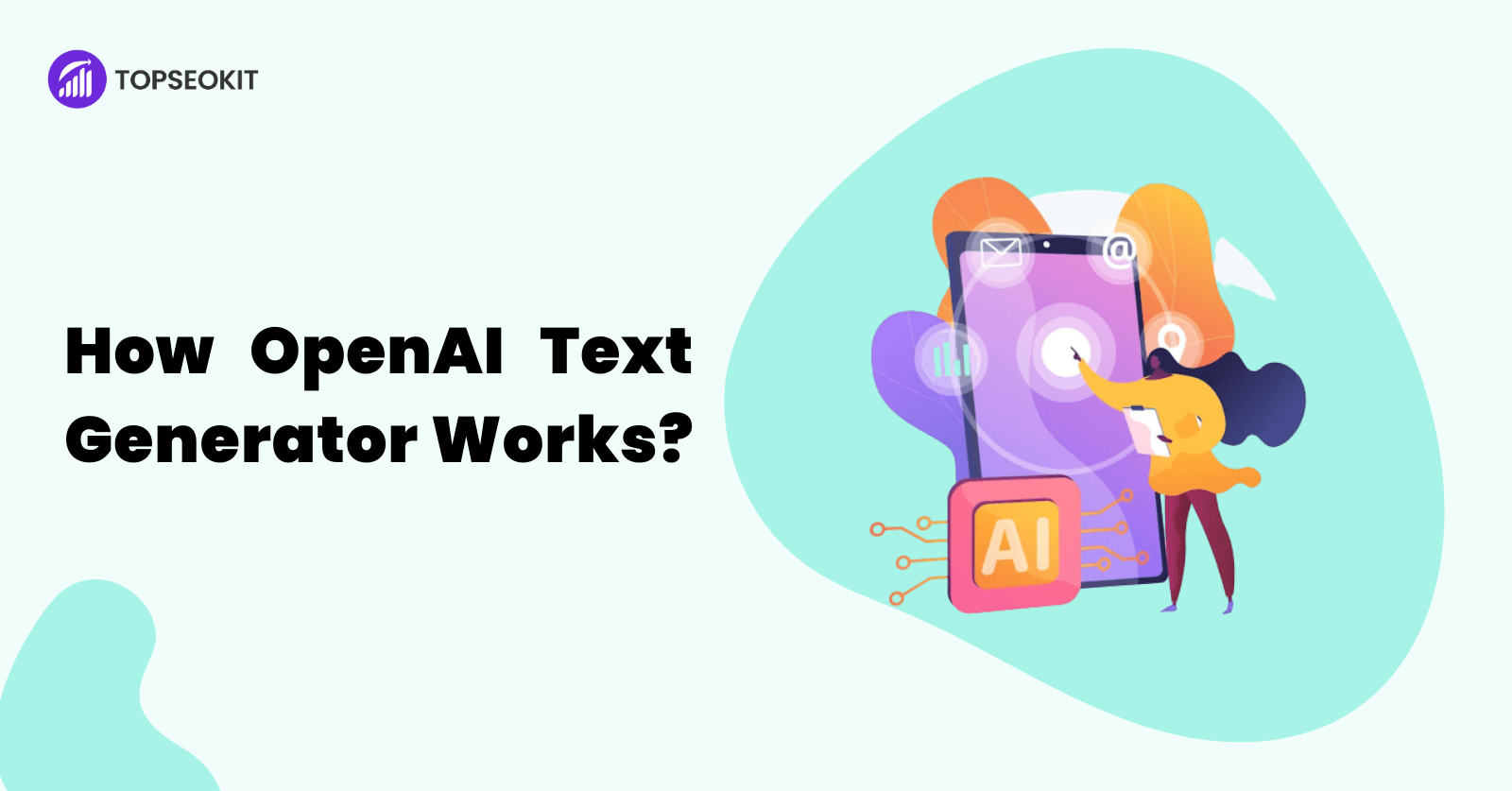Table of Content
- What is an Open AI text generator?
- Understanding open AI text generator
- How Open AI Text Generators Could Change Communication
- The Pros and Cons of Open AI Text Generators in Communication
- Ethical Considerations
- The Future of Open AI Text Generators in Communication
- Conclusion
- FAQs
Welcome to our blog post on Open AI text generator and its potential to transform communication. OpenAI, a leading artificial intelligence research organization, has developed a powerful text generator known as GPT-3 (Generative Pretrained Transformer 3).
This advanced AI model can generate human-like text based on its input. In this article, we will explore the capabilities of Open AI text generator and delve into its potential impact on communication.
1. What is an Open AI text generator?
Open AI text generator is an artificial intelligence model that generates human-like text based on the input it’s given. The most recent version of my training data is GPT-3 (Generative Pretrained Transformer 3), which has 175 billion machine learning parameters and can generate impressively coherent and contextually relevant sentences.
The model has been trained on a diverse range of internet text. Still, if explicitly provided in the conversation, it only knows specifics about which documents were part of its training set or has access to any personal data.
It generates responses to prompts by predicting what comes next in a text based on the patterns it learned during its training.
It’s important to note that while GPT-3 can generate creative and diverse outputs, it needs to understand the text like humans do and aren’t conscious.
It analyzes the input and generates the most statistically probable response based on its training.
2. Understanding Open AI Text Generators

To comprehend the significance of Open AI text generator, it is essential to grasp the underlying concepts of artificial intelligence (AI) and machine learning.
AI refers to developing intelligent machines that can perform tasks that typically require human intelligence. Machine learning, a subset of AI, involves training models to learn patterns and make predictions based on data.
Deep dive into the concept of transformers and language models
Open AI text generator utilizes a sophisticated architecture called transformers. Transformers are neural networks that excel at processing sequential data, such as text. They are designed to understand the relationships between words and generate coherent and contextually relevant responses. By leveraging transformers, Open AI text generator can generate text resembling human-written content.
Language models play a crucial role in Open AI text generator. These models are trained on vast amounts of text data from the internet, allowing them to learn the intricacies of language and grammar.
3. How Open AI Text Generators Could Change Communication
With a solid understanding of AI, machine learning, transformers, and language models, we can now explore the potential impact of Open AI text generator on communication.
Examples
You’re sitting at your desk, a cup of coffee in hand, ready to dive into the world of artificial intelligence. Today, you’re exploring the Open AI text generator, a tool revolutionizing communication. It isn’t just about sending messages faster or typing less; it’s about fundamentally changing how we interact with technology and each other.
Imagine you’re in the middle of a busy day, juggling multiple tasks simultaneously. Your phone buzzes with a message from a friend. Instead of stopping what you’re doing to respond, the Open AI text generator steps in. It understands the context of the conversation, formulates an appropriate response, and sends it on your behalf. It’s like having a personal assistant who knows your communication style.
Now, picture yourself trying to communicate with someone who speaks a different language. Language barriers can be a significant obstacle, but with the Open AI text generator, they become a thing of the past. The tool can translate your message into the recipient’s language in real-time, making cross-cultural communication seamless and effortless.
A. Revolutionizing Personal Communication
- Streamlining Communication with Automated Responses: Open AI text generator can automate responses, making personal communication more efficient. By understanding the context and content of messages, these AI models can generate appropriate responses, saving time and effort.
- Bridging Language Barriers with Translation: Language translation is another area where Open AI text generator can make a significant impact. By accurately translating text from one language to another, they can facilitate seamless communication between individuals who speak different languages.
B. Enhancing Business Communication
- Elevating Customer Service through Automation: Businesses can leverage Open AI text generator to automate customer service. By providing instant, accurate responses to customer queries, these AI models can enhance customer satisfaction and streamline operations.
- Innovating Content Creation: It can also revolutionize content creation. They can generate creative and engaging content for marketing campaigns, social media posts, and more, helping businesses to connect with their audience in new and exciting ways.
C. Transforming Education
- Crafting Personalized Learning Materials: Open AI text generator can create personalized learning materials tailored to each student’s needs. This can enhance the learning experience, making it more engaging and effective.
- Providing Tutoring and Homework Assistance: These AI models can also assist with tutoring and homework. By understanding the student’s queries and providing detailed explanations, they can support learning outside the classroom and make education more accessible.
D. Innovating Healthcare Communication
- Automating Patient Interaction: Open AI text generators can be used to automate patient interactions, providing instant responses to common queries and concerns. This can improve patient satisfaction and free up healthcare professionals to focus on more complex tasks.
- Enhancing Medical Documentation: The AI models can also assist in creating and maintaining medical documentation, ensuring accuracy and consistency, and reducing the administrative burden on healthcare staff.
E. Transforming Legal Communication
- Streamlining Legal Documentation: Open AI text generators can help in the creation and review of legal documents, ensuring precision and saving valuable time for legal professionals.
- Facilitating Legal Advice: The AI models can provide basic legal advice by understanding and responding to user queries, making legal guidance more accessible to the public.
F. Revolutionizing Media and Entertainment
- Creating Engaging Content: Open AI text generators can create engaging content for media and entertainment, from news articles to scripts for TV shows and movies, offering fresh and innovative storytelling possibilities.
- Personalizing User Experience: The AI models can also personalize the user experience by understanding individual preferences and tailoring content accordingly, enhancing user engagement and satisfaction.
G. Enhancing Government and Public Services
- Automating Public Service Responses: Open AI text generators can automate responses to public queries, making government services more efficient and responsive.
- Improving Public Communication: The AI models can assist in crafting clear, concise public communications, ensuring that important information is effectively conveyed to the public.
4. The Pros and Cons of Open AI Text Generators in Communication
As you delve into the world of artificial intelligence, you’ll likely encounter the Open AI text generator, a powerful tool revolutionizing how we communicate. However, like any technology, it comes with its benefits and challenges.
Benefits such as Efficiency and Accessibility
The Open AI text generator offers remarkable efficiency, including its third iteration, GPT-3. It can generate human-like text in a fraction of the time it would take a person to write. For instance, imagine you’re a business owner who needs to draft hundreds of personalized emails. It can complete this task in minutes rather than hours or days.
Moreover, the Open AI text generator enhances accessibility. It can be used to create content for people with different abilities, such as generating audio scripts for visually impaired individuals or simplifying complex text for those with cognitive impairments.
Challenges such as Authenticity and Potential Misuse
Despite its benefits, the Open AI text generator also presents challenges. One of the main concerns is authenticity. Since AI can mimic human writing and generate misleading or false information. For example, it could be used to create fake news or fraudulent messages, which could have profound implications.
Potential misuse is another significant challenge. In the wrong hands, the Open AI text generator could be used for malicious purposes, such as generating spam or phishing emails. It raises questions about ensuring the responsible use of such powerful technology.
5. Ethical Considerations
The potential for misuse of Open AI text generators is not just a technical issue but also an ethical one. As AI becomes more integrated into our lives, it’s crucial to consider the ethical implications.
The Potential for Misuse of Open AI Text Generators
The power of the Open AI text generator, particularly GPT-3, can be a double-edged sword. While it can be used for beneficial purposes, it can also be exploited for harmful ones. For instance, it could generate profound fake text, creating convincing but false narratives that could mislead the public or influence elections.
The Debate Around AI and Ethics
The ethical debate around AI is complex and multifaceted. On the one hand, AI has the potential to improve our lives significantly, making tasks more accessible and more efficient. On the other hand, it raises concerns about privacy, authenticity, and potential misuse. As we continue to develop and use AI, it’s crucial to have ongoing discussions about these ethical considerations.
Open AI Mitigation Strategies
In response to these concerns, OpenAI has implemented several mitigation strategies. They have a robust policy to prevent misuse, including restrictions on using their technology for harmful purposes. They also continually monitor and update their systems to ensure they are used responsibly. By taking these steps, Open AI is working to balance the benefits of their text generators with the potential risks, striving for a future where AI can be used safely and ethically.
6. The Future of Open AI Text Generators in Communication

As you continue your exploration of the Open AI text generator and its advanced version, GPT-3, you might wonder what the future holds for these AI marvels in the communication realm.
Predicting future technological developments, especially in a field as dynamic as artificial intelligence, can be challenging. However, one can anticipate that the Open AI text generator will continue to evolve, becoming even more sophisticated and accurate in its text generation capabilities. Imagine a future in which AI can generate text and understand and respond to nuanced human emotions and cultural contexts. It could lead to more personalized and effective communication, further blurring the line between human and AI-generated text.
The potential impact of the Open AI text generator on various sectors is immense. It could be used in education to create personalized learning materials catering to each student’s unique needs and learning styles. It could automate customer service in the business world by providing quick and accurate responses to customer queries. In the media and entertainment industry, it could be used to generate scripts for movies or video games, creating immersive and dynamic storytelling experiences.
7. Conclusion
As we conclude this exploration, let’s recap the key points. The Open AI text generator, including its advanced version GPT-3, offers numerous benefits, such as efficiency and accessibility. However, it poses challenges and ethical considerations, particularly regarding authenticity and potential misuse. Open AI has implemented mitigation strategies to address these concerns, but we, the users, are responsible for using this technology responsibly.
The transformative potential of Open AI text generators is undeniable. They have the power to revolutionize the way we communicate, making our interactions more efficient and accessible. However, as we harness this power, we must do so cautiously, considering the ethical considerations and potential challenges. As we step into the future, let’s strive to use AI as a tool and a partner in creating a more connected and understanding world.
8. FAQs
Is OpenAI text generator free?
No, Open AI text generator is not free. OpenAI offers its text generation capabilities through various pricing plans and APIs.
How do I create a text generating AI?
Creating a text-generating AI involves a complex process of training a machine learning model on a large dataset of text. This typically requires expertise in machine learning, natural language processing, and access to computational resources.
Is there a free AI content generator?
Yes, there are free AI content generators available, but their capabilities and quality may vary. Some popular free options include GPT-2 models, which were released by OpenAI and are widely used. However, for more advanced or specific use cases, it’s often recommended to explore commercial or premium options.
What is the best open source text generator for AI?
- One of the best open-source text generators for AI is GPT-3.5, which is the underlying architecture of ChatGPT. It provides powerful language generation capabilities and has been widely adopted in the AI community. Other notable open-source text generators include GPT-2 and Transformers, both of which are widely used and supported by the community.

Leave a Reply